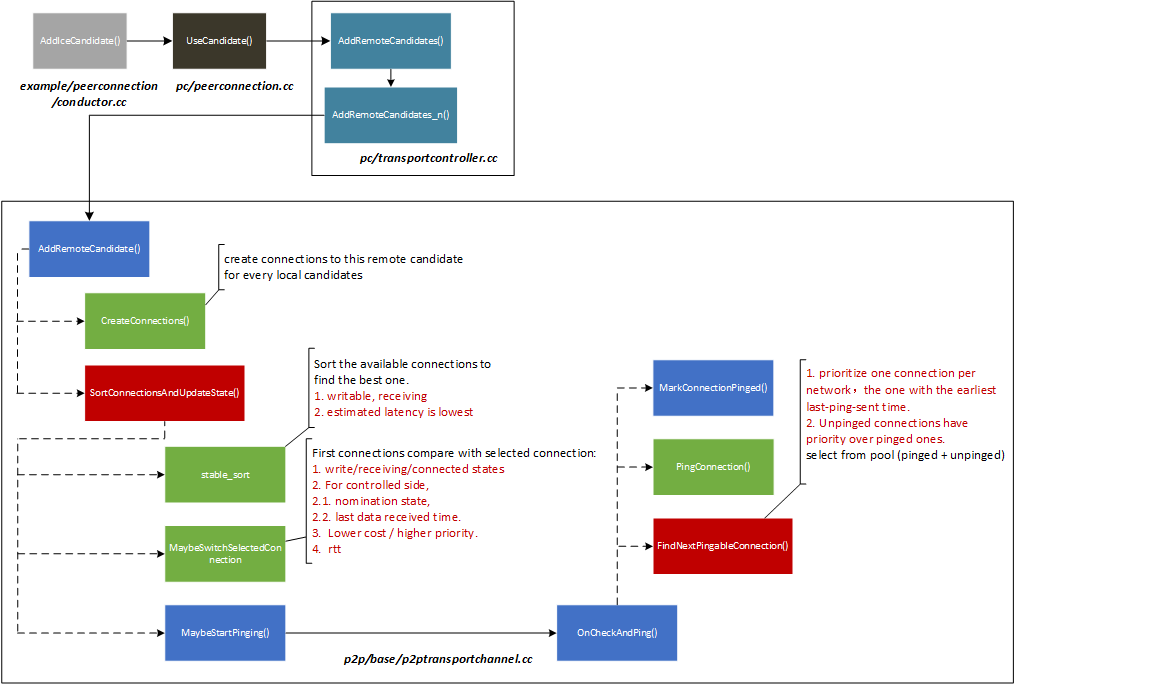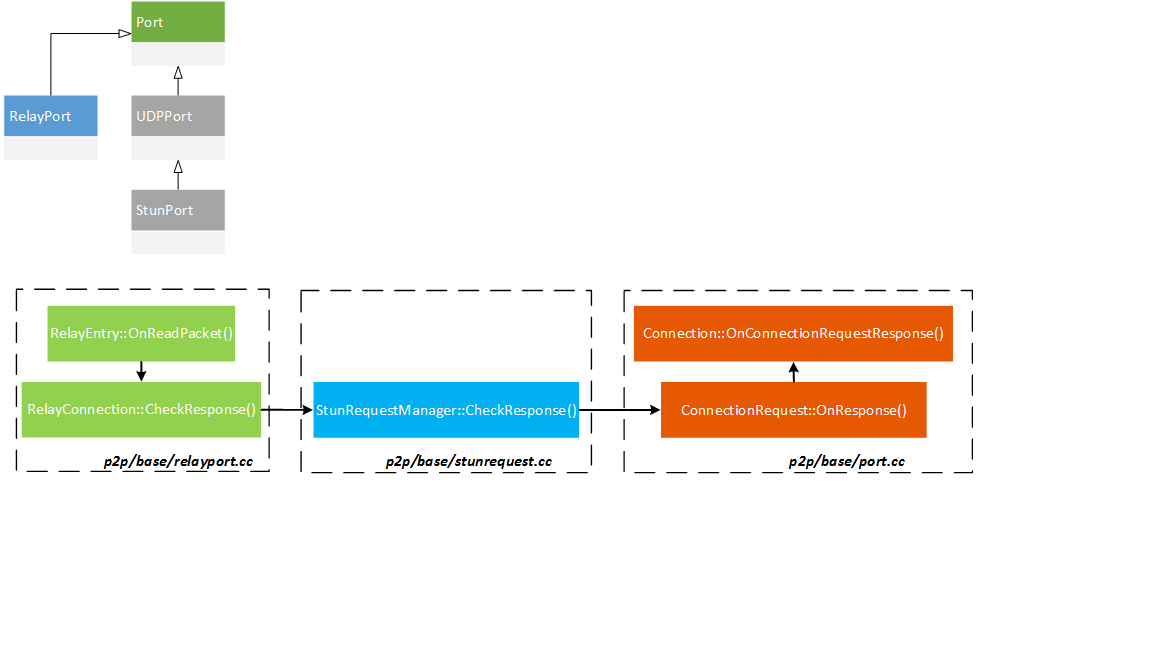1. Prepare

Local 端与remote 连接前,local 端会收取本地的SDP、Candidate。Candidate 其包含了一些网络信息,类似于
1 | { |
收集到的Candidates,会依据:
IPv6 > IPv4
UDP > TCP
以上的准则进行自我的排序准备动作。
2. Connection

在收到remote端的candidate后,会进行如下动作:
| 序号 | 动作 |
|---|---|
| 1 | 将新收到的candidate网络与local 端的每一个candidate都创建一个connection |
| 2 | 将connection 连接对,更新到预备队列中并且排序。排序的依据是:1)writable, receiving; 2) estimated latency is lowest; |
| 3 | MaybeSwitchSelectedConnection(),可能现在到达的remote candidate 是在有了选择连接之后,如果新到的remote candidate 更好,则将此candidate 替换selected_。那怎样是好的呢?1)wirtable、receiving、connected states; 2)nomination state; 3) last data received time; 4)lower cost、higher priority;5)rtt(往返时间间隔); |
| 4 | 开始尝试stun ping 动作 |
| 5 | 从之前拍寻过的队列中选择下一个后背ping item。当然,这里也是有些策略:1)unpinged connections have priority over pinged ones; 2)select best connections from every network, the one with the earliest last-ping-sent time |
3. Selection

在收到stun ping的响应之后,我们可以理解为,这条线路是通的。